Those who love cooking and those who just have to do it are probably familiar with the basic types of kitchen knives and know about the boning knife and the fillet knife. However, for a non-professional, it can be hard to differ from each other.
Moreover, these two are similar, but yet they are quite different. Actually, their names are good indicators of what these knives are aimed for. In the following article, you will find out the boning knife vs fillet knife difference.
You may also like: 7 Best Sabatier Knives Reviews
General description
So, let’s talk about the boning knife.
They are designed to separate the flesh from the bones. Usually, the length of their blade is somewhere between 5 and 7 inches. These knives usually have a flat sharp tip that is straight and slightly curved.
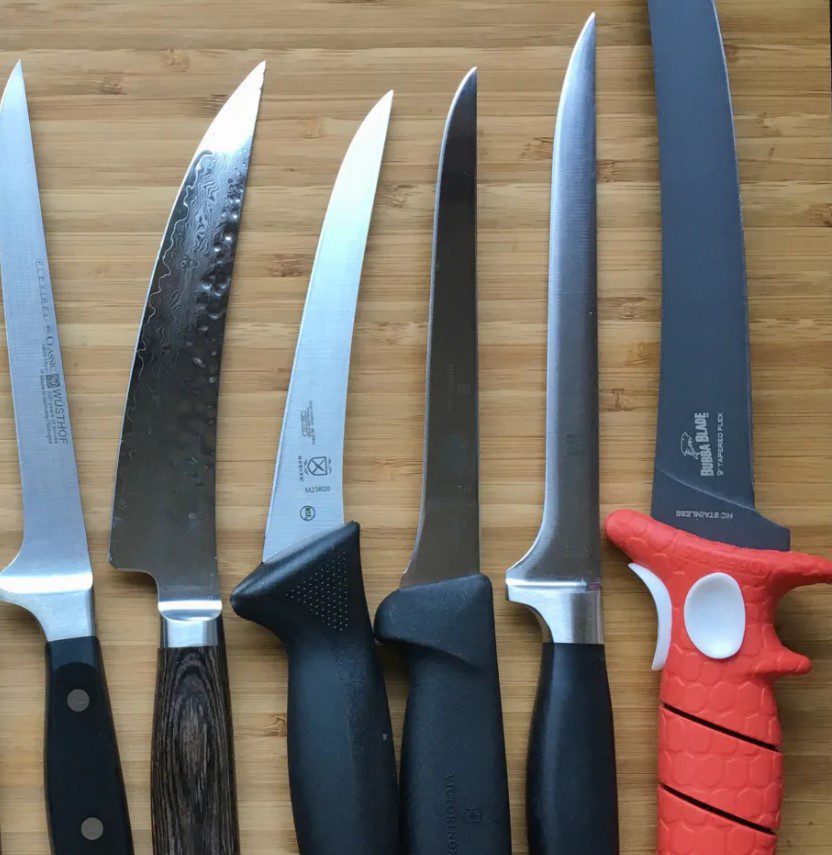
Thanks to their design, this knife allows precise cutting, for example, if you want to cut through ligaments and connective tissue, remove meat from heavy bones or remove tiny bones from fish.
Moreover, those knives are usually thicker and stiff in comparison to filet knives.
You may also like: 7 Best Richardson Sheffield Kyu Knives Reviews
Therefore, filet knives are usually thinner and they are more flexible than any other knife and their length is usually about 5-9 inches long. Their distinctive feature is a prominent upward curve along the blade and there is also a sharply curved tip
Obviously, this knife cannot do the things the boning knife can – with it you won’t separate bones from the means and tissues, since it’s too thin. But when it comes to removing scales from a fish while flexing around the contours of its body without ruining the tender meat, the filet knife is actually perfect.
In conclusion to this short introduction, we can say that boning knives are more versatile than fillet knives since they are applicable to a wider range of actions with meat.
Where do you use the boning knife?
Despite the fact of the comparison with the filet knife, the boning knife is actually much thinner than the other kitchen knives out there. How much this knife is thin depends on the brand, so these measurements may vary. And they will have various results with the different types of meat.
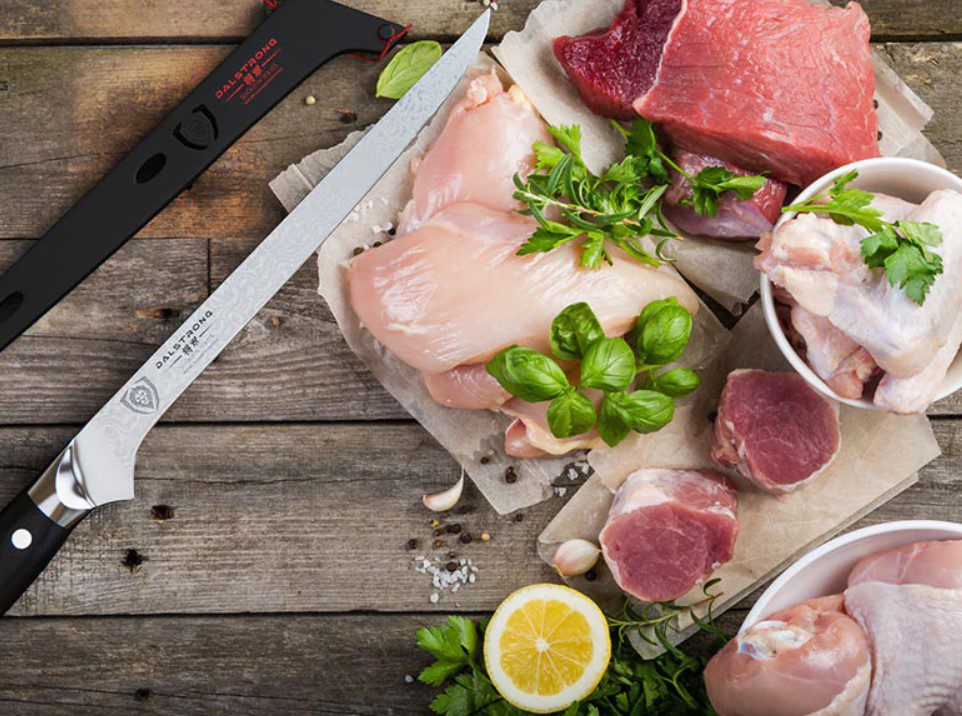
For example, you can take a sturdy, firm-bladed boning knife for slicing beef cut meat away from the bone – and this will be performed perfectly.
Thinner boning knives are better used for chicken and poultry. The boning knives that are flexible are usually super good to use for lamb or pork to cut off the fat layers.
You may also like: 7 Elegant butter knives for your kitchen
And a superior boning knife can be used for basically anything, but only in case, its main goal is flexibility and not hardness. Sometimes it can even include the features of a filet knife.
But even when the boning knife is much thicker and sturdy in comparison to the filet knife, we don’t recommend overusing it with fence bones and chopping. This way, it can easily get dull.
Where do you use a filet knife?
One essential feature of a good filet knife is a pointy upward curve that maximizes the size of the knife’s cutting belly. Thus, in the hands of a good chef, the body of a fish can be carved out in a filet in seconds.
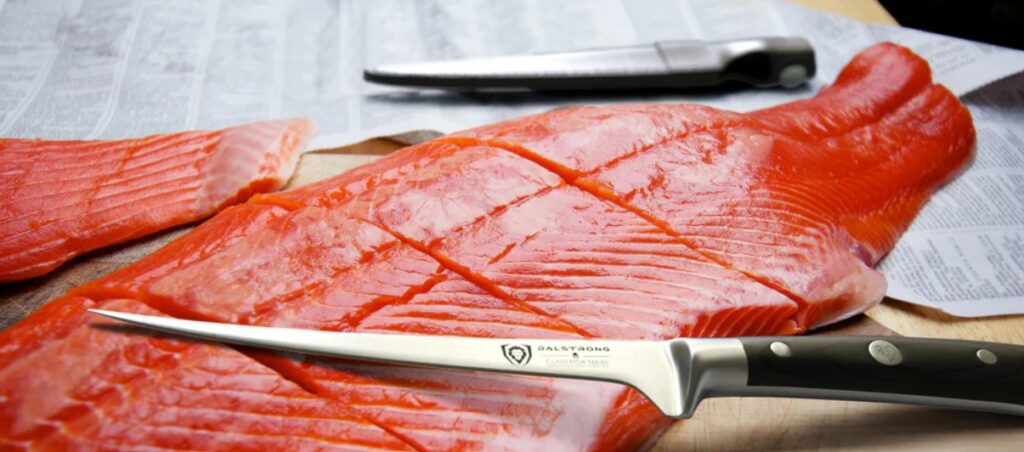
So, since the filet knives are mainly made for working the fish it means they are designed to work in wet environments. What does this mean? They have corrosion-resistant steel and it’s usually so easy to clean. Hardness is not that important here since the fish’s flesh is almost never harsh.
And it’s obvious that these knives have to be extremely thin and delicate to slice precisely the tender soft meat. These can even be called precision instruments, which are designed to be used with surgical proficiency.
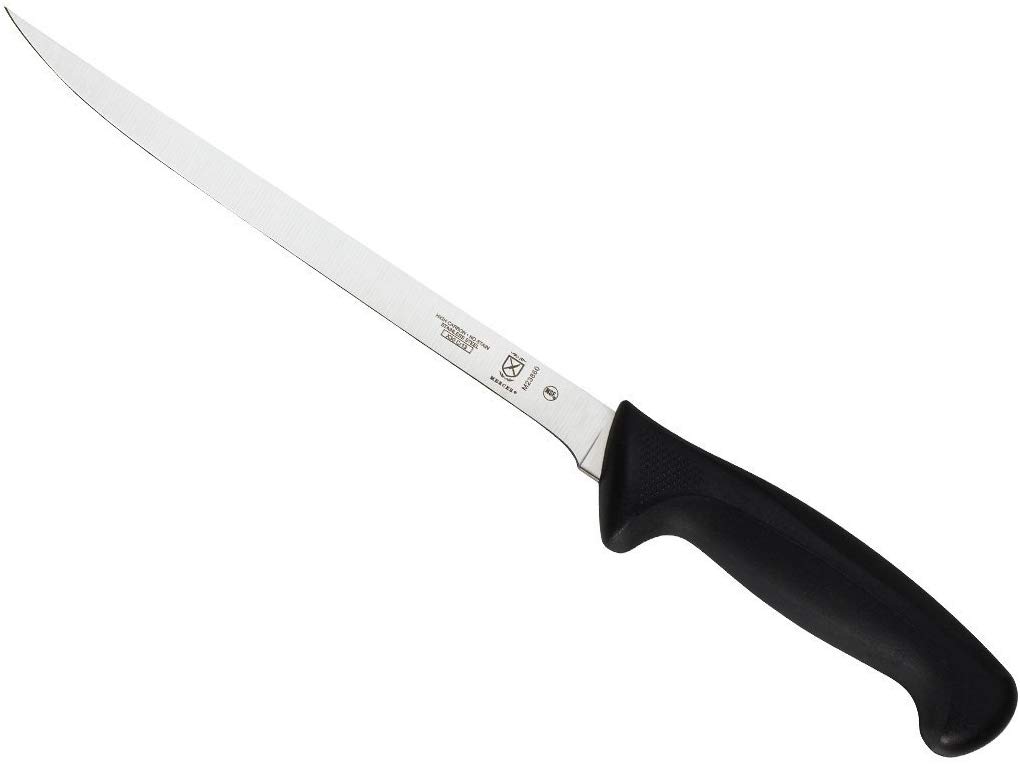
What is more, if you don’t use the fillet knife correctly you can damage its blade. And this knife has also a long, shallow-angled bevel. Because of the reason of extremely thin blade, these filet knives are quite short-lasting – it’s the opposite of the thick meat knives.
You may probably ask why can’t you use your regular or boning knife to cut the fish. The thing is the fish is way too delicate and might fall apart if cut roughly and unproperly. This is especially important for restaurants and cafes to have the filet knife.
Which one to choose?
While regular knives might be no issue to select, it’s getting harder with filet knives and boning knives.
First, pay attention to the materials. If you are choosing a boning knife, it should be made of hard and sturdy steel. It must be durable for usage. The virtue of top-quality boning knives is that they have multiple layers of stainless steel wrapped around the high-carbon steel. This will also make the corrosion resistant.
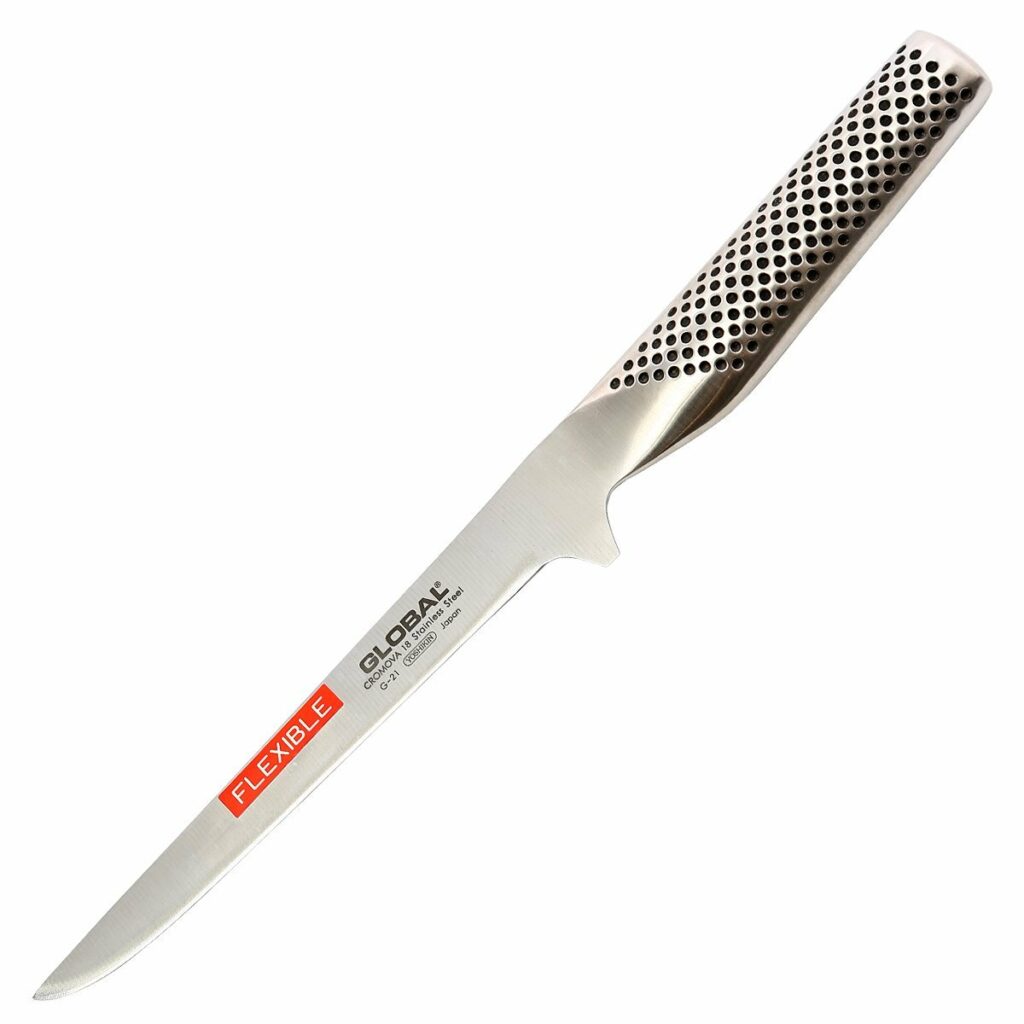
In the case of fillet knives, when you want the most flexible blade, it must be stamped. The hardness factor should be around 54.
When it comes to the handles, you have to make sure that the size of the handle fits the size of your hand’s palm, so it’s easier for you to hold it and it won’t sneak out of your hand.
As for the sharpening, if you are not sure how to sharpen those knives on your own, you will have to apply for professional services. That’s why buying filet and boning knives is only recommended to the trained (almost) pros.
You may also like: 7 Best Ceramic Knives On The Market
The storage conditions are quite the same – just look for those knives in a safe place.
F.A.Q. about the boning and filet knives
What are the best boning knives?
The best boning knife is the ZWILLING J.A. Henckels flexible boning knife. Victorinox Swiss Army Cutlery Fibrox Pro 6-inch blade is a more budget variant. There is also a knife brand called Shun.
What is the best filet knife?
We would recommend the Gerber Controller Saltwater Fillet Knife but everything depends on certain habits and preferences, so it’s hard to tell.
What is the best steel for those knives?
We would recommend choosing knives that are made of stainless steel. It has the best corrosion resistance with minimal upkeep.
